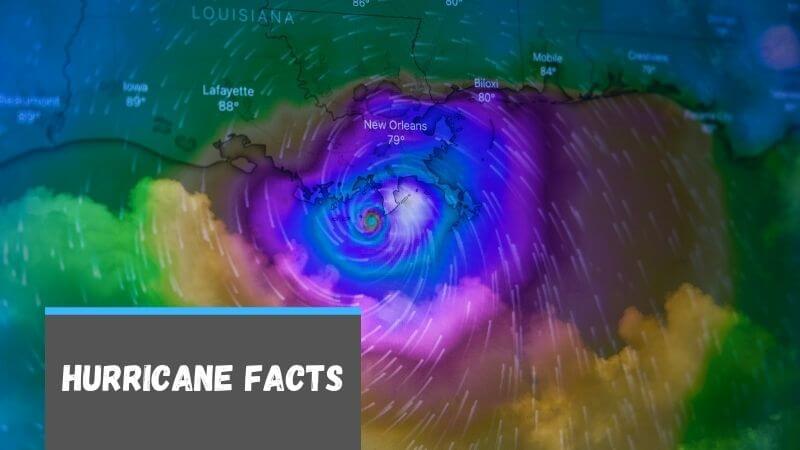
This web page contains hurricane facts for kids and is the perfect resource for anyone of any age researching hurricanes. Our goal is to provide you with the most accurate hurricane facts from scientific sources.
In addition to hurricane facts, you’ll find some awesome hurricane pictures and more resources for researching hurricanes.
The hurricane facts listed below will help you learn about what a hurricane is, how hurricanes form, records set by historic hurricanes and other facts about hurricanes.
We hope these facts about hurricanes are helpful and help you learn more about this powerful meteorological event.
If any of the below hurricane facts are inaccurate, please contact us and let us know.
21 Hurricane Facts for Kids

- A hurricane is a powerful tropical storm.
- A tropical storm is considered a hurricane when its winds reach or exceed 74 mph (119 km/h).
- Hurricanes are also known as cyclones or typhoons, depending on which region they occur in.
- The word hurricane comes from “Huracan”, the name of a Mayan god. The Mayans believed this was the god of big winds and evil spirits.
- Hurricanes frequently form in tropical regions, which are area around the Earth’s</a equator.
- Hurricanes need warm water to develop and continuous access to warm water to increase in strength.
- Hurricanes rapidly lose strength when they make landfall and move inland.
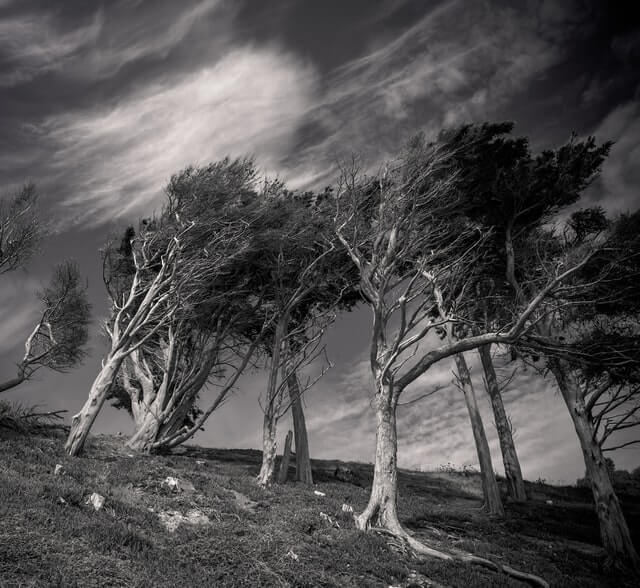
- Hurricanes north of the Earth’s equator spin counterclockwise.
- Hurricanes south of the Earth’s equator spin clockwise.
- The three main parts of a hurricane are the eye, the eye wall and rain bands.
- The eye is the center of a hurricane. This is the blue circle you see in the middle of a hurricane.
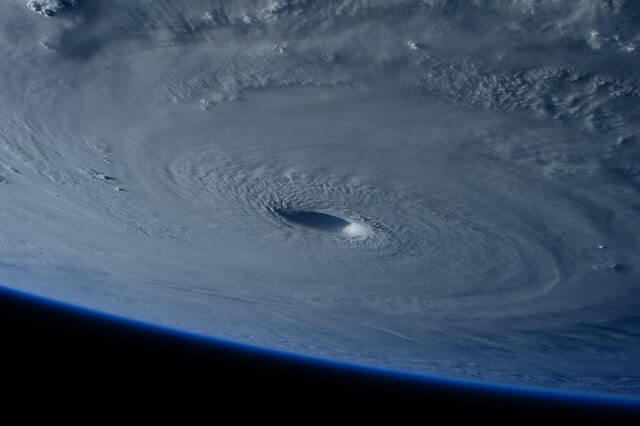
- The eye wall is the area around the eye. This is where the most dangerous winds of a hurricane occur.
- The rain bands are the outer part of a hurricane that spin with it.
- Hurricanes can produce violent winds, heavy rain, tornadoes, storm surges and flooding.
- The storm surge and flooding produced by hurricanes are the main cause of fatalities.
- The strength and intensity of a hurricane is defined using the Saffir-Simpson hurricane wind scale.
- Powerful category 5 hurricanes can devastate a region and cause many fatalities.
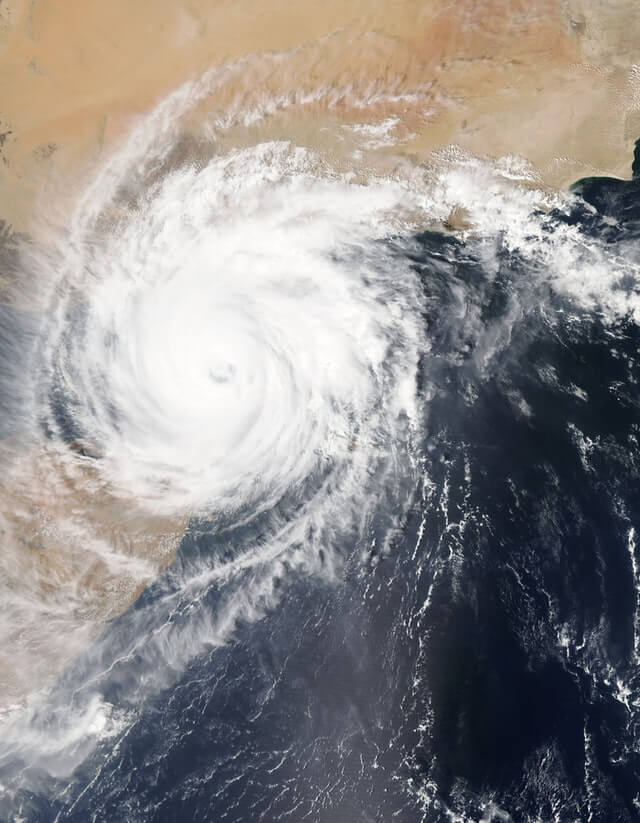
- Coastal regions are areas with the greatest risk of a hurricane.
- In the Atlantic, on average there are ten named tropical storms, six of those will become hurricanes and between two to three will become a major hurricane.
- The world’s deadliest hurricane was the Bhola Cyclone in 1970. It’s estimated up to 500,000 people were killed.
- The United States deadliest hurricane was the Galveston Hurricane in 1900. It’s estimated that up to 8,000 U.S. citizens were killed.
We have a comprehensive glossary of hurricane terms if you need help understanding some of the terms used on this page. If you’d like to learn more about past major hurricanes you should check out our hurricane history archive. We recommend you also review our list of hurricane myths and learn about some of the misinformation out there about tropical storms and hurricanes.
Hurricane Pictures
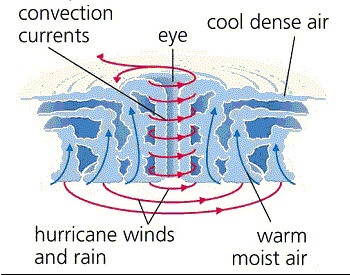
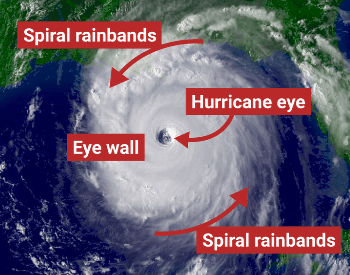
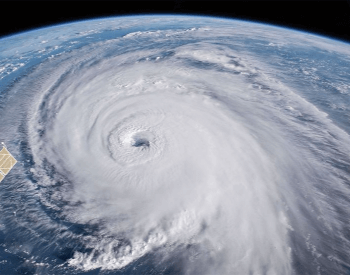
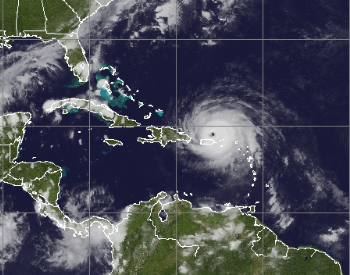
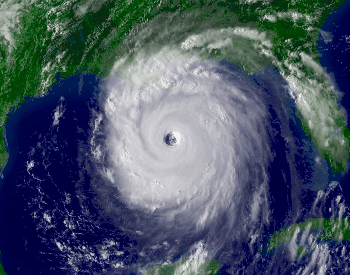
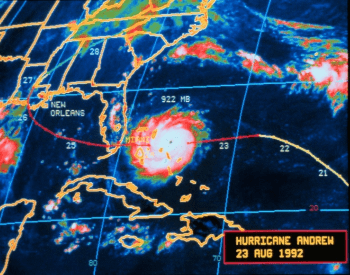
Additional Resources for Hurricane Research
-
- National Hurricane Center – A U.S. government division that is responsible for tracking and predication tropical storms.
- Hurricanes on Ready.Gov – The Department of Homeland Security’s web page on what actions to take for a hurricane watch and a hurricane warning.
- FCC Hurricane Information – Tips from the Federal Communications Commission on hurricane preparedness, response and recovery.
- Hurricane Information from WHOI – Basic information on hurricanes for kids from the Woods Hole Oceanographic Institution
- Hurricane Safety Information from NWS – Hurricane safety tips and resources from the National Weather Service.
</ul
